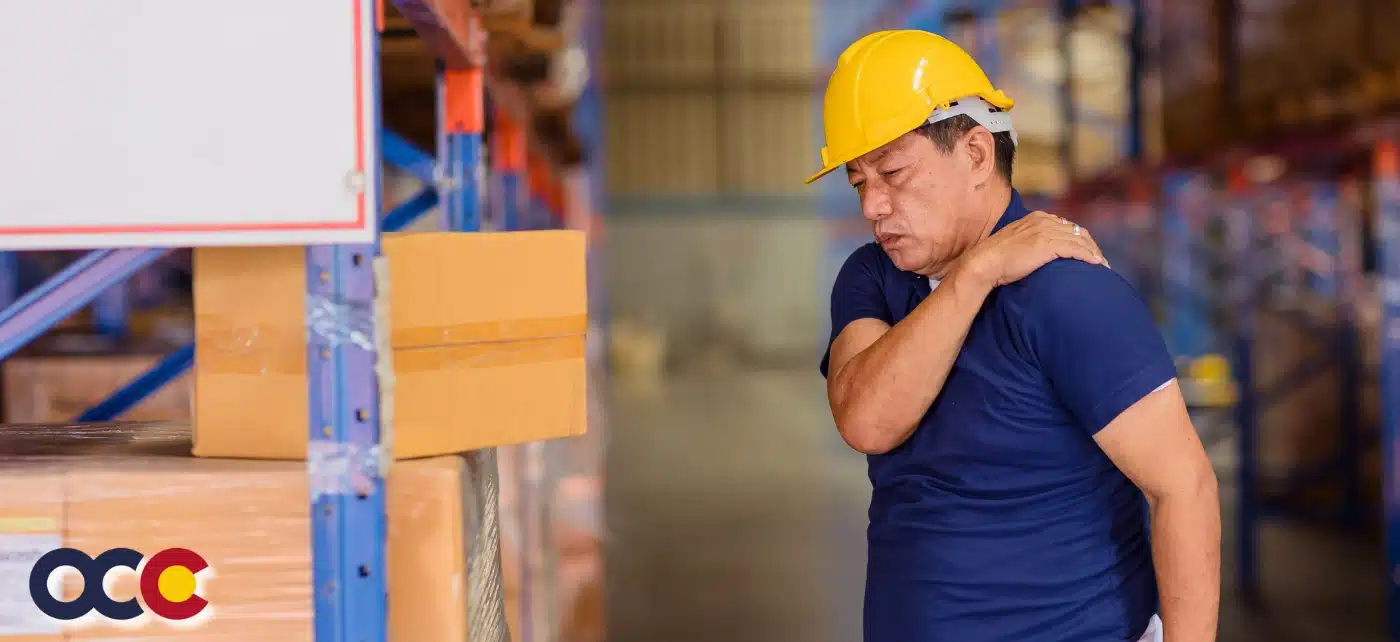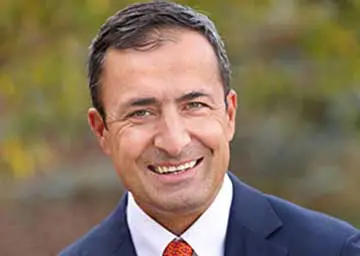Pain in the shoulder’s acromioclavicular (AC) joint is a common problem that can be severe and persistent enough to interfere with your daily routine. It can be hard to do the things you’re used to doing because movements like putting on a seat belt or reaching for something high up can be painful. Advanced AC joint injuries can cause lost time at work. Leaving an AC joint injury untreated means your condition can worsen, which can have serious consequences, such as severe shoulder separation, serious displacement, or a collarbone fracture. It can cause damage to nearby joints such as the rotator cuff. Instead of waiting until it gets to that point, if you are experiencing any debilitating symptoms, you should see one of the first-class orthopedic specialists at OCC – Advanced Orthopedic & Sports Medicine Specialists in Denver, Parker, or Aurora, Colorado.
OVERVIEW
inflammation is the body’s natural response to injury, disease, overuse, or degeneration, and it often causes swelling, pain, or irritation. Inflammation of the AC or acromioclavicular joint is a frequent cause of pain in the top portion of the shoulder and is usually caused by arthritis or an injury. Acromioclavicular joint injuries account for more than forty percent of all shoulder injuries. An acromioclavicular joint injury can result in a severe AC sprain, AC fracture, or an AC joint separation, which occurs when the collarbone (clavicle) separates from the shoulder blade (acromion). Shoulder injuries involving the AC joint are more common among males than females. Males in their 20s and 30s are more likely to experience these injuries.
ABOUT THE SHOULDER
The shoulder is a complex, ball-and-socket joint made up of three bones: the upper arm bone (humerus), shoulder blade (scapula), and collarbone (clavicle). The ball, or head, of the upper arm bone fits into a rounded socket (glenoid) in the shoulder blade. The arm bone is kept centered in the shoulder socket by a combination of muscles and tendons (rotator cuff). The rotator cuff covers the head of the upper arm bone and attaches it to the shoulder blade. The AC joint is where the acromion (the tip of your shoulder blade—scapula) meets your clavicle(collarbone). Cartilage (flexible but tough tissue) forms a cushion between these bones. A thin layer of synovial fluid also helps lubricate the joint. This joint helps maintain the position of the shoulder and is very important for shoulder control, motion, and strength. The joint is stabilized by a capsule and ligaments, and injury occurs when these structures are damaged. When the capsule and ligaments are injured, the joint can become unstable and painful, and shoulder function can be affected.
WHAT CAUSES AC JOINT PAIN?
AC joint pain can be caused by various factors, including arthritis, injuries, repetitive overuse, or degenerative changes.
Arthritis
Arthritis is the most common source of AC joint pain. Over time, the cartilage that cushions the joint wears away. When the bones rub against each other, it inflames the joint, causing pain, swelling, and tenderness, especially with activity. Eventually, bone spurs may develop, which are growths of bone that jut out from the joint. The joint may also become larger
Injuries
Sprains, tears, and separations of the ligaments that hold the joint together are the most common types of AC joint injury. They usually follow a direct hit or fall onto the shoulder. Two ligaments may be involved–the AC ligament and the coracoclavicular (CC) ligament AC joint injuries range from minor to incapacitating and are divided into three categories by degree of severity as follows:
Type 1: ligaments surrounding the AC joint have been stretched or sprained but not torn.
Type 2: The AC ligament is torn, and there is minor damage to the CC ligament, but it isn’t torn.
Type 3: both ligaments are torn so that the collarbone is separated from the shoulder blade. AC joint injuries can occur in any athletic activity where falling or hard contact with an opponent is possible. This contact can suddenly push the shoulder blade away from the collarbone, stretching or tearing the ligaments that support the AC joint. The most common sports that see AC joint injuries include football, cycling, mountain biking, martial arts, lacrosse, skiing, snowboarding, and hockey.
Repetitive Overuse
Most common in individuals who perform tasks such as heavy weight lifting (bench and military presses) or those with jobs that require physical labor with arms stretched over the head like construction. Even tasks that involve lifting arms overhead such as painting ceilings can lead to injury. Activities that involve frequent reaching across the body such as in tennis or baseball can strain the AC joint.
Degenerative changes
With age, osteoarthritis—also known as “wear and tear” arthritis can destroy the articular cartilage (smooth outer covering of bone in the AC joint, resulting in inflammation. As the cartilage wears away and becomes frayed and rough, the protective space between the bones decreases. During movement, the bones of the joint rub against each other and cause pain. Osteoarthritis usually affects people over 50 years of age.
Other causes include prolonged computer use without proper ergonomic setup, regularly carrying heavy bags or backpacks on one shoulder, and poor posture.
SYMPTOMS
AC joint sprains typically cause shoulder pain and soreness and may reduce movement in the shoulder. Symptoms can vary depending on how bad the sprain is but may include:
- Pain and soreness in the shoulder
- Soreness to the touch
- Swelling or bruising of the shoulder
- Clicking or popping sounds when moving the shoulder are called crepitus
- Reduced shoulder movement and arm stiffness
- A bulge in the shoulder or general change in its shape
- A shift in the collarbone’s position
NON-SURGICAL TREATMENTS
AC joint sprains generally respond well to treatment; most injuries don’t require surgery. Typical conservative treatments include:
- Resting the shoulder
- Activity modification—avoiding movements that can cause or aggravate symptoms such as sports, sleeping on the shoulder, or using the injured arm to reach above the head
- NSAIDS such as ibuprofen or aspirin may help relieve pain, inflammation and swelling
- Steroid injections—on average, the relief they provide lasts for 2-3 months and while they may help temporarily, do not provide a cure
- Keeping the shoulder in a sling to protect from another injury and help position the joint to heal correctly.
WHEN IS SURGERY INDICATED?
Surgery may be required for injuries grade 3 and above or those that cause prolonged pain. Surgery for AC joint injuries may involve removing the end or restoring the clavicle’s position to relieve pain and allow the patient to resume normal joint functioning. Many injuries can be repaired using arthroscopy. This minimally invasive procedure requires only small incisions and is often done on an outpatient basis. The surgeon will view the inside of the shoulder with a tiny camera and perform the arthroscopic surgery using special, pencil-thin instruments. More complex injuries may need to be done with open surgery.
GETTING THE RIGHT DIAGNOSIS. GETTING THE RIGHT DOCTOR.
If you have severe AC joint pain, no matter what the cause, you want to be taken care of by the exceptionally experienced and exacting diagnosticians at Advanced Orthopedics in Denver, Parker, or Aurora, Colorado. After a thorough exam, which may include imaging such as an X-ray to rule out a bone fracture or an MRI to help evaluate whether other areas in the shoulder have been damaged, they will review and explain in detail the best treatment plan for you, so that you can make an educated decision. The caring experts at Advanced Orthopedics are well-known for their outstanding results in helping their patients with AC joint pain regain full function, pain-free, so that they can return to work, sports, or normal activity. In every way with Advanced Ortho, you can trust you’re in the best hands. If you are experiencing shoulder pain, schedule an appointment with a shoulder specialist.














